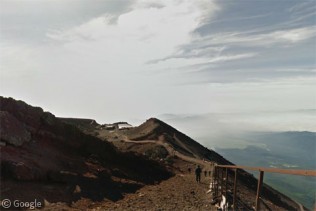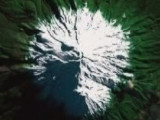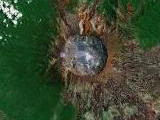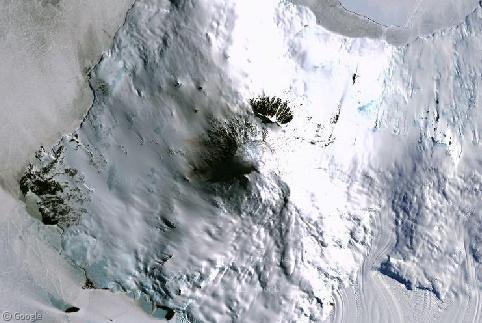Mount Fuji (Volcano Week 4)
Friday, 31st July 2009 by Alex Turnbull
It’s Volcano Week 4 here at GSS. Volcanoes, about a week. You know the drill!
Japan's Mount Fuji (Fuji-san) is one of the most iconic and best recognised of any of Earth's volcano, and when GSS first launched we received many suggestions that we post it. Unfortunately Google's imagery was fairly low resolution at the time.1
Thankfully the current imagery is vastly improved, and with its famous snow-capped peak, the view of Mount Fuji from up here is absolutely stunning.
At 3,776 metres, Mount Fuji is Japan's highest mountain by a good margin, and given how beautiful it is from ground-level, it's perhaps unsurprising that Fuji is widely regarded with great national pride, and has so often been a subject of Japanese art.
Although it hasn't erupted since 1708, Mount Fuji is considered "active"2, albeit with a low risk of eruption. For the sake of any occupants of all the buildings perched around the crater, I hope the volcanologists are right.
These buildings aren't permanently occupied however, as they mostly exist to service the needs of the 200,000 people who climb Mount Fuji every year. Paved roads run to 2300 metres, from where the summit can be reached in 5 to 7 hours.
As I write this Wikipedia is having technical issues, but they do have a page about Mount Fuji. If you're interested in climbing it yourself, Japan Guide has the full breakdown of how to go about it.
Thanks to (deep breath) Adam, hito, Ben, Jacek Fedorynski, Anne Mathews, Caius Toneriko, Jared, Eric, Ron Vogel, Roy Tanaka, Chris Palmieri, Planck, Ramsey Callaway, Matt Van Pelt, Corey, Colin Allen, TSG, Eitan Nudel, Fero GUNIC, Adrian Ward, Boniface, numlok, Tom Grusendorf, ian, Jerry Mills, Manuel Fernandez, Phillip Lockwood-Holmes, Dan, Turtleknee, TomG and Alfred.
-
You can still see this imagery on Google Maps if you zoom out a bit, or by using the historical imagery tool in Google Earth. ↩︎
-
Although there's no real consensus among volcanologists on how to properly define an "active" volcano, as their lives could span several million years. ↩︎








Sharing statistics
Share this site